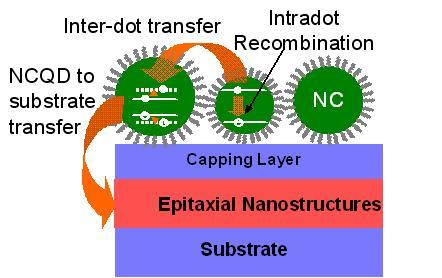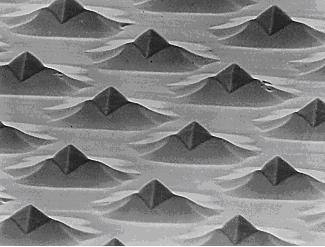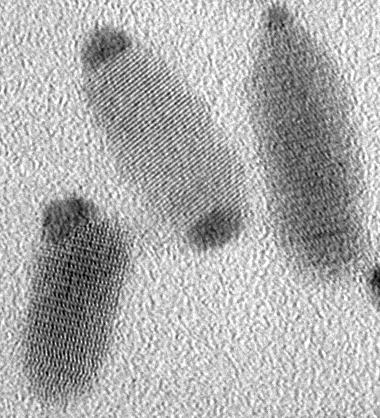Anupam Madhukar
Nanostructure synthesis
and structural, optical, and electrical examination;
self-organized nanostructures for radiation detection
and solar energy conversion; abiotic-biotic interfacial
phenomena at the nanoscale; plasma membrane - quantum
nanostructure composites for neuronal cell actuation;
live cell imaging and spectroscopic studies of intracellular
biochemical processes.

Hybrid nanostructures for solar
energy conversion and biochemical detection applications

Quantum dot array grown via
molecular beam epitaxy (MBE)

Functional abiotic nanosystems
(FANs) for probing and actuating cellular processes
|

The Madhukar Group (Nanostructure Materials and Devices
Laboratory - NMDL) is internationally known for the
spawning and development of the field of self-organized
semiconductor nanostructures. We carry out multi-disciplinary
research with a focus on examining phenomena in novel
nanoscale structures and at the abiotic-biotic interface
for applications in: computing and communication; conversion
of solar photons to power; early detection of biological
markers of disease or pathogens in the environment;
suppression of immune response to neural prostheses;
developing cellular level prostheses we call FANs (functional
abiotic nanosystems) for probing and modifying cellular
response; and real-time imaging and spectroscopic probing
of intra-cellular biochemical processes in live cells
under applied stress.
Madhukar holds appointments in Biomedical Engineering,
Chemical Engineering, Materials Science, and Physics,
and is a member of the Center for Neural Engineering
(CNE) and the NSF sponsored Engineering Research Center
on Biomimetic Microelectronic Systems (BMES). We are
interested in dedicated students with sound grounding
in any science and engineering undergraduate discipline
and who also enjoy an intellectually challenging, communicative,
interactive, and dynamic work environment.

Semiconductor - Metal Nanocrystal Heterojunction
BACK TO TEAM PAGE
MADHUKAR GROUP HOME
|